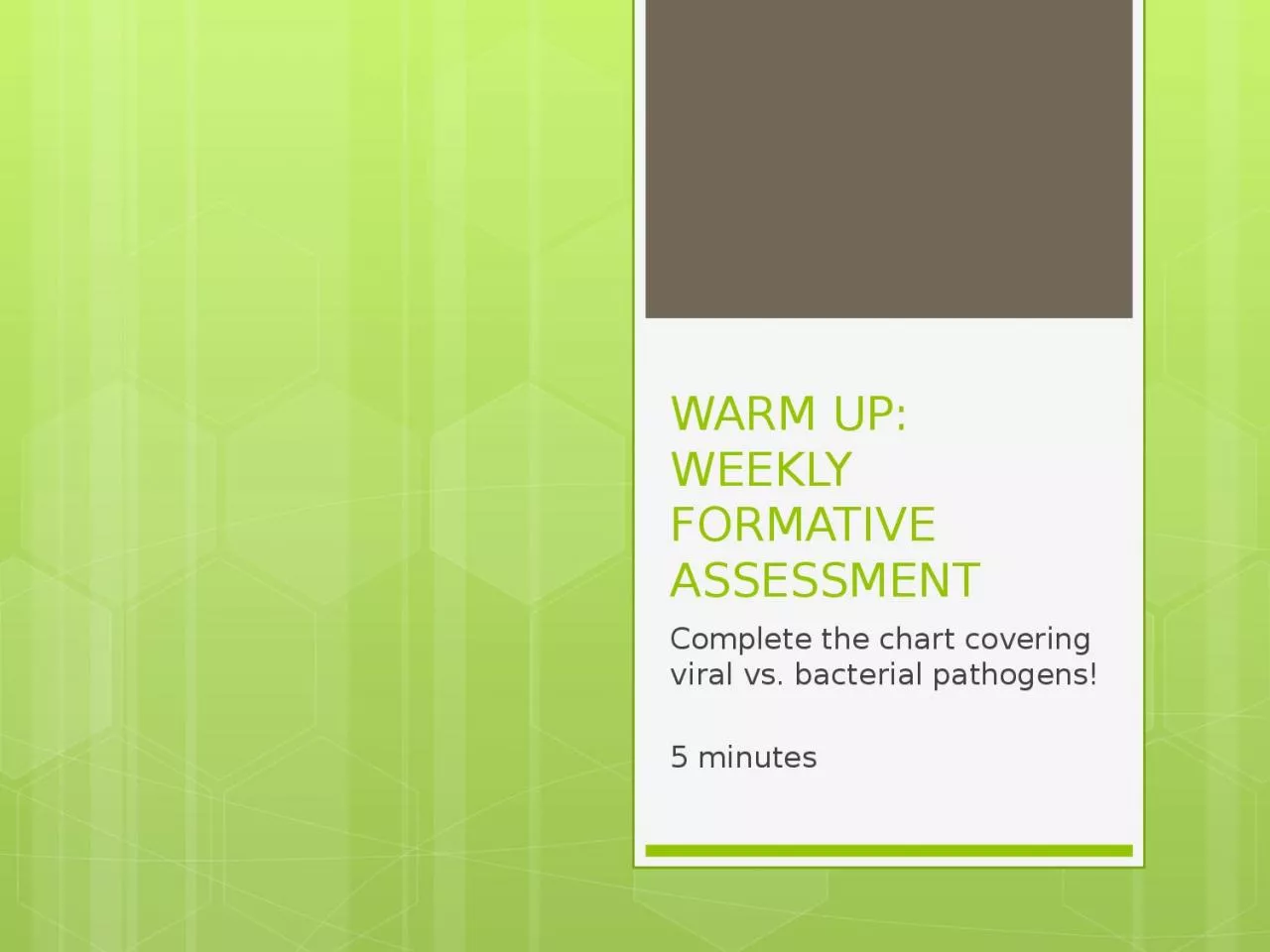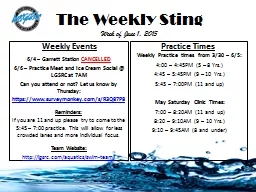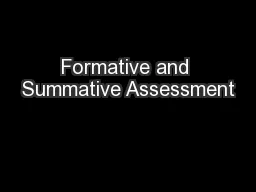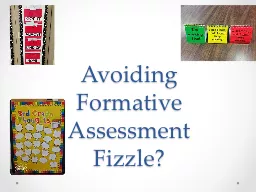PPT-WARM UP: WEEKLY FORMATIVE
Author : nicole | Published Date : 2023-10-29
ASSESSMENT Complete the chart covering viral vs bacterial pathogens 5 minutes WHAT IS ONE CRITICAL THING THESE PEOPLE DO IN ORDER TO PLANK ON AN OBJECT CHECK THIS
Presentation Embed Code
Download Presentation
Download Presentation The PPT/PDF document "WARM UP: WEEKLY FORMATIVE" is the property of its rightful owner. Permission is granted to download and print the materials on this website for personal, non-commercial use only, and to display it on your personal computer provided you do not modify the materials and that you retain all copyright notices contained in the materials. By downloading content from our website, you accept the terms of this agreement.
WARM UP: WEEKLY FORMATIVE: Transcript
Download Rules Of Document
"WARM UP: WEEKLY FORMATIVE"The content belongs to its owner. You may download and print it for personal use, without modification, and keep all copyright notices. By downloading, you agree to these terms.
Related Documents













![[EBOOK] Farmhouse Plaid 2021 Weekly Planner: 2021 Weekly /Monthly Planner Doodle Calendar](https://thumbs.docslides.com/1005268/ebook-farmhouse-plaid-2021-weekly-planner-2021-weekly-monthly-planner-doodle-calendar-life-planner-2021-weekly-planners.jpg)
![[READ] 2021 Monthly Weekly Planner: Forever is composed of nows Emily Dickinson 2021 Weekly](https://thumbs.docslides.com/1005580/read-2021-monthly-weekly-planner-forever-is-composed-of-nows-emily-dickinson-2021-weekly-monthly-pocket-planner-doodle-calendar-2021-weekly-planners.jpg)